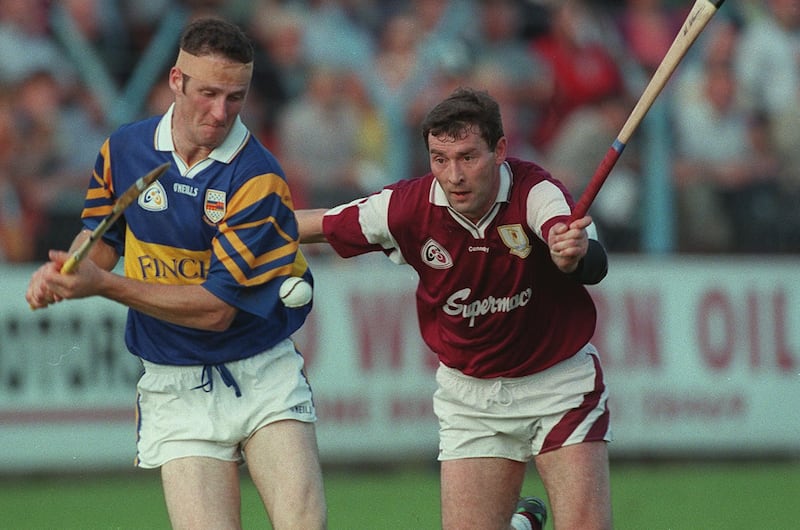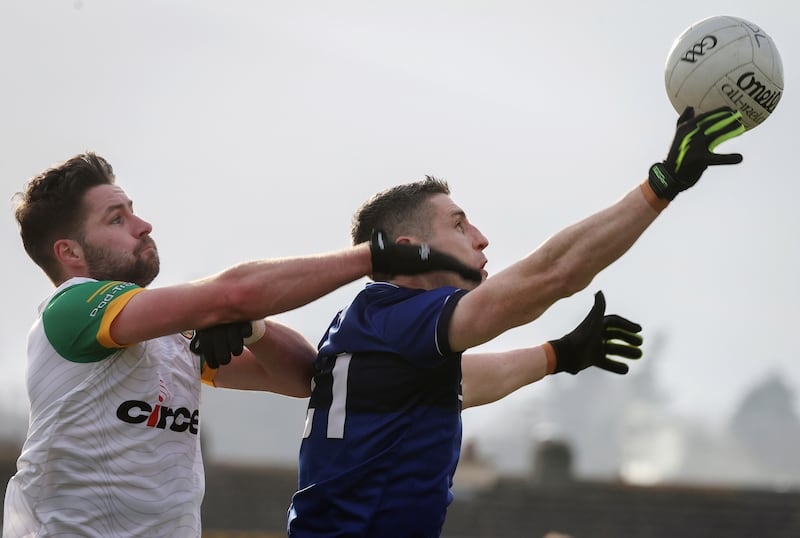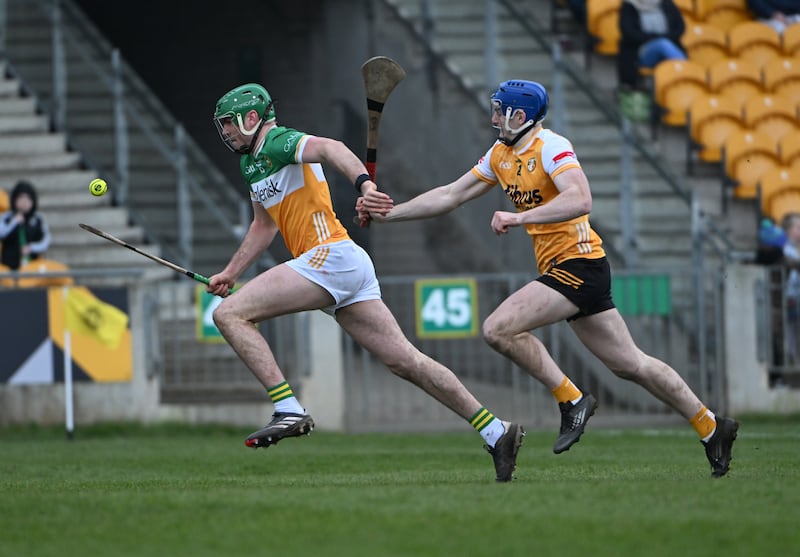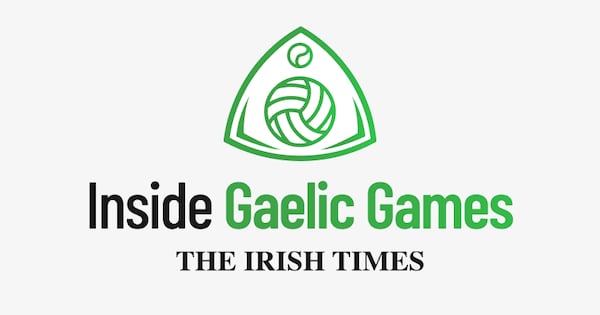Age of camera phones means GAA can’t just let incidents slide by
It had become clear by the end of last week that Seamus Flanagan was going to escape a suspension for striking Niall O’Leary off the ball in Limerick’s opening league match. A social media clip of the incident was circulated so widely that RTÉ were emboldened to address the matter on their League Sunday highlights programme, something they had never done before. In their own footage nothing had shown up.
The initial line from the GAA was that they were waiting for the referee’s report but over the following days the story fizzled out, without any further action from the CCCC.
In the outside world, social media footage has become such an integral part of news gathering and news reporting that Mark Little, the former RTÉ reporter, saw a gap in the market. In 2010 he founded Storyful, which not only harvested content from social media channels, but verified its authenticity – essentially screening it for the consumption of legacy media. Three years later the company was bought by News Corp for €18 million.
READ MORE
For sports organisations the existence of such content and its immediate access to an audience far greater than any organ of legacy media poses a challenge that cannot be wished away. If the CCCC were spooked by the origin of the footage in this case it is not good enough for the GAA to simply wait for the storm to pass and hope that some internal disciplinary action is taken.
In the event, it emerged yesterday that the issue was addressed by John Kiely, the Limerick manager, and Flanagan was omitted from the match day squad for the game against Tipperary. Within the Limerick squad over the years there had been other disciplinary matters that didn’t leak into the public domain, and according to one former player, Kiely “met those situations face-on and addressed them.”
From the GAA’s standpoint, though, the responsibility for dealing with this incident shouldn’t fall on the conscience of an intercounty manager. It is a racing certainty that other incidents will be captured on camera phones during the year and there will pressure on the GAA to act. Letting this one slide won’t solve the problem. — Denis Walsh

Michael Coleman: ‘Profound effect he had on hurling fraternity is massive’
There was a minute’s silence for Michael Coleman in Pearse Stadium on Saturday. The All-Ireland winning centrefielder, who died aged 61 in an accident on Friday, was remembered at Galway’s league match with Clare. As well as the pre-match gesture, the home team wore black armbands.
Manager Micheál Donoghue said that the passing of the distinguished former player had been talked about in the dressing-room before the match started. Fittingly, Galway recorded an emphatic win over All-Ireland champions Clare.
Donoghue also managed the Galway team, which eventually closed the gap on the 1988 All-Ireland winners by emulating them in 2017.
Speaking afterwards, he said that he had been conscious of the need for a performance, “in particular, you know, the events of Michael passing over the last 24 hours, the profound effect that has had in the hurling fraternity is massive.
“And when he played, he always played with massive distinction and we wanted to make sure that we gave them a performance that they’d be proud of.”
The occasion was especially appropriate given that in 1987 when Michael Coleman won a league medal, he lined out against the weekend’s opponents Clare, as Galway recorded a first league win in 12 years.
Although later released from the panel and not a member for that year’s All-Ireland win, he was back for the 1988 championship and the same year, played in his club Abbeyknockmoy’s only senior county title.
Irish Times hurling analyst Nicky English was a contemporary and remembers Michael Coleman well, even before his senior successes which include three league titles and three All Stars.
“In the late 1980s and ‘90s, he was a mighty influence for Galway and really difficult to overcome at midfield. I actually marked him in the 1983 All-Ireland under-21 final when playing at centre back and he was in the forwards and they beat Tipperary. I had also met him in his UCG days in Fitzgibbon.
“In my last year, 1996, he captained them in the league final when they beat us.
“He was hugely athletic, powerful and a very good hurler – a key man for Galway in 1988 – and a handful for anyone marking him because he was well able to play as well, very intelligent in his use of the ball. He had it all.
“That group have had more than their fair share of sudden and untimely loss.”
It’s not the first bereavement for that Galway back-to-back team, as Tony Keady, Hurler of the Year in 1988, died suddenly in 2017 at the age of 53. — Seán Moran

There is still plenty of nuance to football kickouts
Among the more esoteric grumbles about the new football rules is the charge that the kickout has been reduced to a lottery. From the very first weekend when Conor Laverty of Down was puffing his cheeks on TG4 at how frantic things had become around the middle third, there has been a pretty consistent drumbeat of giving out about the rule mandating that kickouts have to clear the 40m arc now.
The thrust of the complaints seem to be that goalkeepers have no option now but to hoof the ball long, thereby taking all the skill and wit out of the position. And there are plenty of occasions in every game where that’s true – although it’s not necessarily a bad thing. Restoring collisions and chaos to the game was and is entirely in the spirit of what the FRC have been trying to do.
But even allowing for that, the notion that all kickouts are just tombola spins now doesn’t hold water. Anyone who watched Donegal v Kerry on Saturday saw Shaun Patton show that the best goalies in the game aren’t going to just keep drilling out long one after long one. Two of his first four were short and low, right out to the space between the arc and the sideline on the Donegal 20-metre line. They were high-risk but the Donegal corner-backs were up to it and got out both times.
That set the game of cat and mouse in motion. Once Kerry saw that he was prepared to go short, they moved to squeeze up that space, meaning that Patton increasingly went longer. And yes, a lot of them were contested around the middle and Donegal had to take their chances with the breaks. But he managed to get several of them into open country too, with Donegal runners galloping onto them and Jim McGuinness’s side immediately on the attack.
The point is, many goalkeepers will settle for lumping the kickouts long and taking their chances. But the best ones in the game won’t be happy with that and they’ll find a way to separate themselves from the pack. Isn’t that what we want? — Malachy Clerkin

Offaly on the rise again with promise of youth
There appears to be a lightness to the air around Offaly hurling right now, a sense of potential. For so long, too long, there seemed to be a cloud of grim acceptance hanging overhead – a beaten down perception that the good times were consigned to the past, only to revisit the county again whenever the anniversaries came around.
But the historic All-Ireland under-20 triumph last June – Offaly’s first at the grade – could prove to be the catalyst for the seniors to finally make steady and sustainable progress.
Six of the under-20s played in Offaly’s 15-point win over Antrim in Tullamore on Sunday. And while Antrim were poor, Offaly played some really impressive hurling – moving the ball well, good handling, passing and strong in the tackle.
“(Having the under-20s) it has added depth to our panel,” says Offaly manager Johnny Kelly.
“But equally important is the way our older fellas have stayed with it, and their condition over the last number of years has been vital to that. The young fellas are brilliant and their first touch is excellent, but the strength and power and pace of the likes of Oisín Kelly, Brian Duignan, Charlie Mitchell, Killian Sampson, Ross Ravenhill and Ciarán Burke – we’ve been working with them for the last two or three years, and it’s starting to pay off. So hopefully that continues.
“The way the under-20s are gelling with the more experienced guys is something we would have worked on, that unity of purpose between the underage coming through and the guys that have been there for years soldiering in Joe McDonagh.”
Offaly are now top of the Division 1B table with five points from three rounds. And they have done it all so far without one of the most exciting young hurlers in the country, Adam Screeney.
“He has an osteitis pubis injury,” explains Kelly. “There is no timeline on that, it’s how he responds to rehab, so hopefully towards the end of the league we’ll see Adam.” — Gordon Manning
Lovely hurling: the lesser-spotted first-time pull
It still comes up in polite conversation. A hurling game will descend into a pattern of broken-down passing triangles and ungainly rucks and someone will mutter, either to themselves or to the crowd: “would they not just pull on the bloody thing”.
And others will politely nod and agree, and point to the open space on the wing that this phantom pull could have opened up, but deep down they all know the truth. First-time hurling is dead and gone, it’s with Seanie O’Leary in the grave.
And yet – thankfully – the game still throws up the odd moment to stir the heart of the first-time aficionado. Seánie Kenneally produced a glorious one for Tipperary in their loss to Limerick at the Gaelic Grounds on Sunday.
Darragh McCarthy managed to create the chance for his team-mate, winning a high ball and popping a pass off to Kenneally. Maybe you can put it down to youthful exuberance, but the full-forward cycled instantly through the many easy options available and settled on the hardest, choosing to double on the ball first time and send it rifling past Shane Dowling in the Limerick goal.
Obviously had the ball not ended up in the net, Kenneally would have had to suffer some brickbats from the crowd, probably from the same people espousing the glory of first-time hurling, but let’s take our joy where we can. An rud is annamh is iontach. — Patrick Nugent
- Sign up for push alerts and have the best news, analysis and comment delivered directly to your phone
- Join The Irish Times on WhatsApp and stay up to date
- Listen to the Counter Ruck podcast for the best rugby chat and analysis















